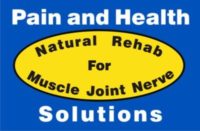
What Is a Soft-Tissue Injury?
A soft-tissue injury involves damage to the muscles, ligaments, tendons and/or fascia somewhere in the body. Common soft-tissue injuries usually occur from a sprain, strain, blow to the body resulting in a contusion (ruptured blood vessels/bruising), or overuse of a particular body part. Soft tissue injuries can result in pain, swelling, bruising and loss of function. Adhesions within the soft tissue may develop as a result of repeated strain, surgery, immobilization or other mechanisms.
What Is Instrument-Assisted Soft-Tissue Mobilization (IASTM)?
IASTM involves using a range of tools to enable clinicians to efficiently locate and treat individuals diagnosed with soft-tissue dysfunction. Many different materials have been used to make the instruments (i.e. wood, ceramics, plastics, stone and stainless steel). The Graston® Technique is one popular example of IASTM that is used here at OrthoBethesda.
Is IASTM appropriate for me?
IASTM can be used to help alleviate the following symptoms:
- Limited motion
- Pain during motion
- Motor control issues (muscle activation/coordination)
- Muscle recruitment issues
What does IASTM do/How does it work?
Often, patients with soft-tissue injuries do not seek out physical therapy until the injuries have become chronic (weeks/months after injury). By this point, the body has completed most of its self-healing process. Scar tissue and adhesions are formed during this healing process, which limits motion and often causes pain. Scar tissue and adhesions essentially act like super glue in your body. When scar tissue is created after injury, new cells are laid down excessively and in a disorganized manner. Scar tissue/adhesions prevent the muscle or other tissues from lengthening appropriately. It is often necessary for the physical therapist to restart the healing process in order to remodel the soft tissues in the affected area. By introducing controlled microtrauma to affected soft tissue using IASTM, a local inflammatory response is stimulated. This microtrauma initiates reabsorption of inappropriate or excessive scar tissue and facilitates a remodeling of the affected soft-tissue structures. After IASTM treatment, scar tissue can be remodeled so that the cells become organized in a direction that better promotes movement.
Studies have shown clinical benefits of IASTM with improvements in range of motion, strength and pain perception following treatment.

